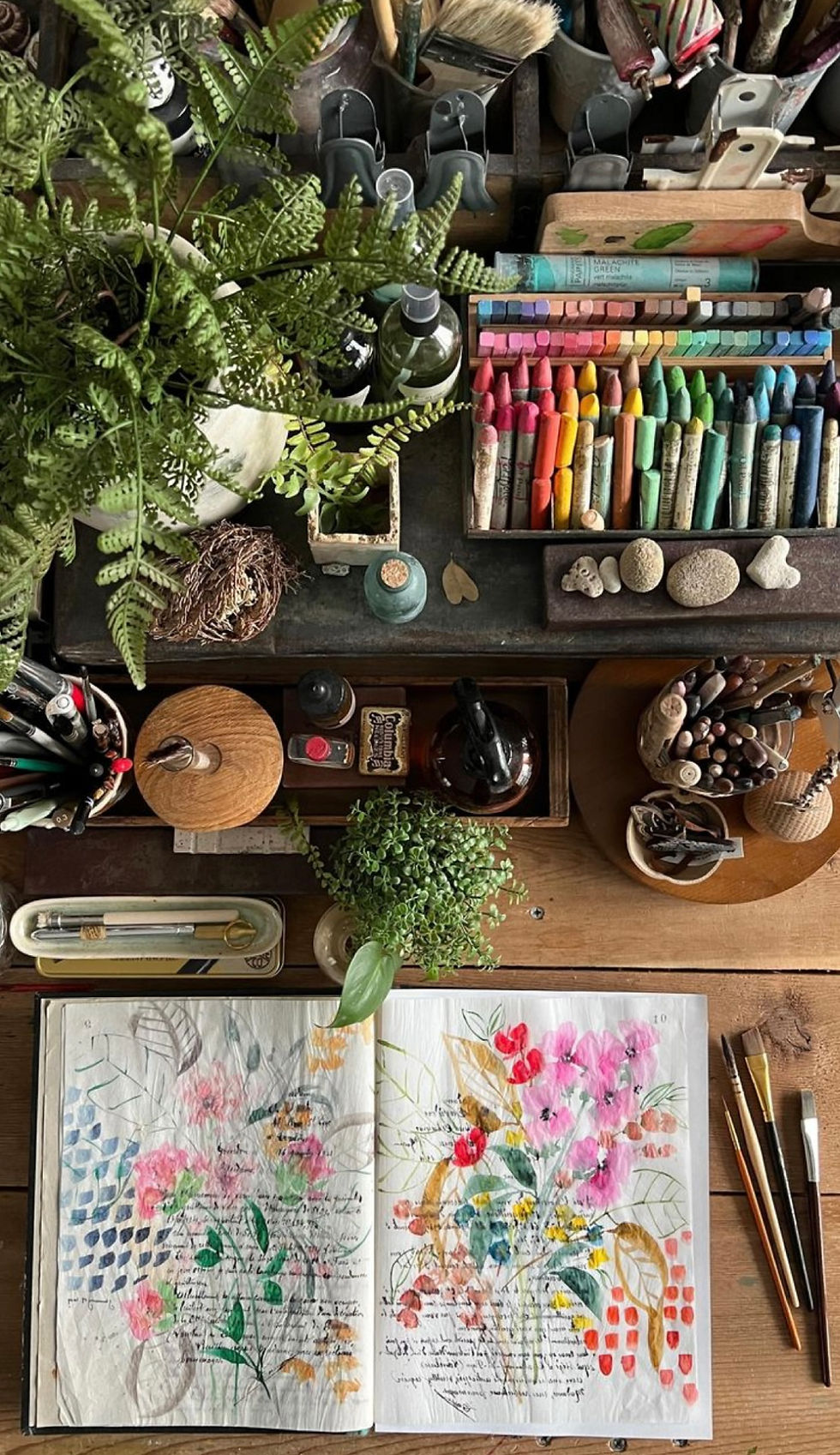Art therapy has emerged as a powerful tool for improving mental health, combining the creative process with therapeutic techniques to promote emotional well-being. At Art Stop Namibia, we believe in the transformative power of creativity, and we’re excited to explore how art therapy can positively impact lives.
What Is Art Therapy?

Art therapy is a therapeutic practice where individuals use art-making as a means of expression and self-discovery under the guidance of a trained art therapist. Unlike traditional talk therapy, art therapy relies on the creative process to explore emotions, reduce anxiety, and foster a sense of accomplishment.
The focus isn't on creating masterpieces but on using art as a medium for self-expression and healing. Whether it's painting, drawing, sculpting, or even working with textiles, the act of creating provides a safe space to explore thoughts and feelings that might be difficult to articulate in words.
The Benefits of Art Therapy for Mental Health
1. Stress Reduction
Creating art helps lower cortisol levels—the hormone associated with stress. Whether you're sketching, painting, or coloring, the repetitive and immersive nature of art-making encourages relaxation and mindfulness, reducing feelings of overwhelm and tension.
Example: Think of how coloring in a mandala or sketching a landscape draws your attention away from daily worries and into the present moment.
2. Improved Emotional Expression
For many, expressing emotions verbally can be challenging. Art therapy provides a non-verbal outlet to communicate complex feelings such as grief, anger, or sadness. This can be especially helpful for children, individuals with trauma, or those experiencing depression.
Did you know? Studies show that visualizing and externalizing emotions through art can help individuals understand and manage their feelings better.
3. Enhanced Self-Esteem
Engaging in creative activities fosters a sense of achievement and self-worth. Completing an art project, no matter the scale, can boost confidence and encourage individuals to recognize their capabilities.
Art Therapy Techniques You Can Try at Home

While working with a professional art therapist is ideal, there are several ways to integrate art therapy techniques into your routine:
1. Journaling Through Art
Instead of writing, express your thoughts and emotions through doodles, collages, or abstract paintings. Use colors to represent your mood and let the process guide you.
2. Dot Art for Relaxation
Dot art kits are excellent for focusing your attention and reducing stress. The repetitive patterns encourage mindfulness and provide a satisfying creative outlet.
3. Paint Your Emotions
Choose colors and brushstrokes that reflect your current emotional state. Let your intuition guide the process without overthinking the outcome.
4. Mandala Creation
Drawing or coloring mandalas can help calm the mind and center your thoughts. The symmetry and patterns encourage a meditative state.
The Science Behind Art Therapy
Art therapy works on a neurological level to improve mental health. Here’s how:
Activating the Reward System:Engaging in art-making releases dopamine, a neurotransmitter associated with pleasure and motivation. This is why people often feel a sense of joy or accomplishment after completing an art project.
Reducing the Fight-or-Flight Response:Art-making activates the parasympathetic nervous system, which helps calm the body's stress response. This can be especially helpful for those with anxiety disorders or PTSD.
Engaging Both Hemispheres of the Brain:Creating art integrates the emotional right brain and the logical left brain, promoting holistic problem-solving and emotional regulation.
Art Therapy and Trauma
Art therapy has been particularly effective in helping individuals process and recover from trauma. The act of creating provides a sense of control, allowing individuals to confront difficult emotions in a manageable way.
For example, veterans with PTSD have found relief in art therapy programs that allow them to depict their experiences and work through their emotions in a safe, supportive environment. Similarly, survivors of abuse can use art to reclaim their narrative and rebuild a sense of safety.
Art Therapy for Children and Adolescents
Art therapy can be a game-changer for younger individuals. Children often struggle to articulate their feelings verbally, and art provides a natural and enjoyable way for them to express themselves.
In Namibia, where many children may face socio-economic or emotional challenges, introducing art therapy in schools and communities could significantly improve mental health outcomes. Activities like drawing, clay modeling, and group mural projects encourage collaboration, empathy, and emotional exploration.
Breaking the Stigma Around Mental Health and Art Therapy

In many cultures, including Namibia, mental health is still surrounded by stigma. People may hesitate to seek traditional therapy for fear of judgment or misunderstanding. Art therapy can serve as a gentle introduction to mental health care, focusing on creativity rather than pathology.
By fostering open conversations about the benefits of art therapy, we can encourage more people to explore this accessible and non-intimidating form of self-care.
Where to Begin?
At Art Stop Namibia, we’re committed to supporting the well-being of our community through creative expression. If you’re interested in starting your journey with art therapy, here are some steps:
Join Workshops: Look for local art therapy workshops or creative community events.
Explore DIY Kits: Try paint-by-numbers or dot art kits to begin your creative journey in a structured yet relaxing way.
Set Up a Creative Corner: Dedicate a small space in your home for art-making. Keep materials like paints, markers, and sketchbooks handy.
The Takeaway
Art therapy is more than just a creative outlet—it’s a pathway to self-discovery, healing, and growth. Whether you’re managing stress, processing trauma, or simply seeking joy, art therapy offers an empowering way to improve your mental health.
At Art Stop Namibia, we believe in the transformative power of art for everyone. Let this be your invitation to pick up a brush, a pencil, or even a block of clay and start your journey toward a healthier, happier you.
Let’s create together!
Are you ready to explore the world of art therapy? Visit Art Stop Namibia for workshops, kits, and more inspiration.
Yours truly,
Cathy Ray






Comments